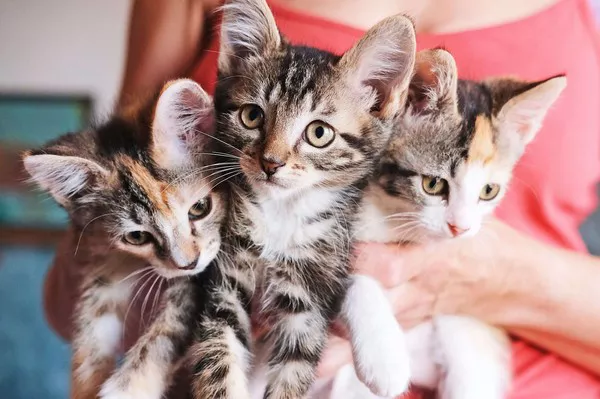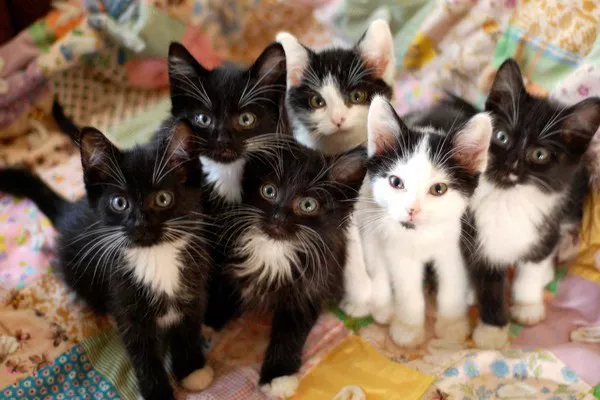Calico cats, with their striking tri-colored coat of white, black, and orange, are a fascination for cat lovers worldwide. These beautiful felines are predominantly female, and the question that often arises in the minds of many is, “Is there male Calico cats?” The answer is a resounding yes, but male Calico cats are indeed a rarity. In this article, we will delve into the intriguing world of Calico cats, explore the genetic factors that make male Calico cats so unusual, and discuss the unique characteristics and challenges faced by these exceptional feline outliers.
The Elegance of Calico Cats
Before we delve into the rarity of male Calico cats, let’s take a moment to appreciate the beauty and elegance of Calico cats. These charming creatures are renowned for their unique coat patterns, which typically feature patches of white, black, and orange or ginger fur. The combination of these three colors creates a striking and visually captivating appearance. Calico cats are often associated with good luck and are considered lucky charms in various cultures, making them highly desirable as pets.
Is There Male Calico Cats?
Male Calico cats are, indeed, a rare sight, and this rarity can be attributed to the intricate genetics behind their unique coat coloration. To understand why male Calico cats are so unusual, we must first explore the genetics of coat color in cats.
The Genetics of Calico Cats
The distinctive coat of Calico cats is a result of genetic factors, specifically related to the X and Y chromosomes. In cats, just as in humans, males typically have one X and one Y chromosome (XY), while females have two X chromosomes (XX). The genes responsible for coat color and patterns are located on the X chromosome. These genes include those for black (eumelanin) and orange (pheomelanin) fur pigments.
The Role of X Chromosomes
In female cats, the presence of two X chromosomes provides a unique opportunity for intricate coat coloration. If one X chromosome carries the genes for black fur color and the other carries the genes for orange fur color, a mosaic pattern of black and orange patches can develop. White fur patches are the result of a separate gene.
Why Are There Female Calico Cats?
Female Calico cats are relatively common due to their two X chromosomes. As a result, they can inherit different combinations of X-linked coat color genes from their parents, leading to the development of the iconic tri-colored coat pattern. One X chromosome may carry genes for black color, while the other carries genes for orange color, with the white fur gene also playing a role.
The Exception: Male Calico Cats
The rarity of male Calico cats can be traced back to the genetic composition of males. As mentioned earlier, male cats possess one X chromosome and one Y chromosome (XY). The presence of only one X chromosome in males creates a significant hurdle in developing the Calico coat pattern.
Male Calico Cats: The Genetic Quirk
Male Calico cats do exist, but their presence is a genetic quirk. To understand how this happens, it’s essential to recognize that in rare cases, a male cat can be born with an extra X chromosome, resulting in XXY instead of the typical XY chromosome combination. This additional X chromosome carries the genes responsible for coat coloration.
Klinefelter Syndrome and Male Calico Cats
The condition in which a male has an extra X chromosome, known as XXY or Klinefelter syndrome, is the key factor behind the existence of male Calico cats. Male cats with this chromosomal abnormality have the genetic potential to exhibit the Calico color pattern, as they possess the necessary combination of X-linked genes for black, orange, and white fur.
Calico Males: A Rarity Within a Rarity
While the presence of an extra X chromosome theoretically allows male cats to exhibit the Calico coat pattern, these males remain exceptionally rare. The occurrence of Klinefelter syndrome in cats is infrequent, and not all XXY males will display the distinctive Calico coloration. Moreover, the Klinefelter syndrome can bring along a set of health issues for the affected cats.
Unique Characteristics of Male Calico Cats
Male Calico cats, due to their rarity and genetic makeup, possess several unique characteristics and challenges:
1. Striking Coat Patterns: Male Calico cats that do exhibit the tri-colored coat pattern often have exceptionally striking and eye-catching appearances, making them unique among their feline peers.
2. Increased Health Risks: Cats with Klinefelter syndrome may face an elevated risk of certain health issues, including fertility problems and a higher likelihood of developing other genetic abnormalities.
3. Sterility: Male Calico cats are almost always sterile due to their extra X chromosome, which affects their ability to produce viable sperm. This sterility prevents them from fathering offspring.
4. Limited Population: Due to their rarity and the associated health challenges, male Calico cats are not commonly found in the general cat population. They remain an exceptional and unique subset within the feline world.
The Fascination with Male Calico Cats
Despite their rarity and unique genetic makeup, male Calico cats continue to captivate the imagination of cat enthusiasts. Their striking appearance and the intriguing genetic factors that underlie their existence make them objects of fascination and admiration.
Conclusion
In the world of cats, male Calico cats are indeed a rarity, with their unique tri-colored coat pattern resulting from the presence of an extra X chromosome, often associated with Klinefelter syndrome. While they are a fascinating subset of the feline population, their rarity and the associated health challenges make them exceptional and noteworthy within the realm of cat genetics. Male Calico cats serve as a testament to the complexity of genetics and the diverse array of coat colors and patterns that can be found in the world of domestic cats. So, the next time you encounter a male Calico cat, you can appreciate not only their striking appearance but also the genetic quirks that brought them into existence.
Related Topics:
Calico Cats: Color Variations, Genetics, & Interesting Facts
How do Calico cats reproduce?
How rare are Calico cats?

























